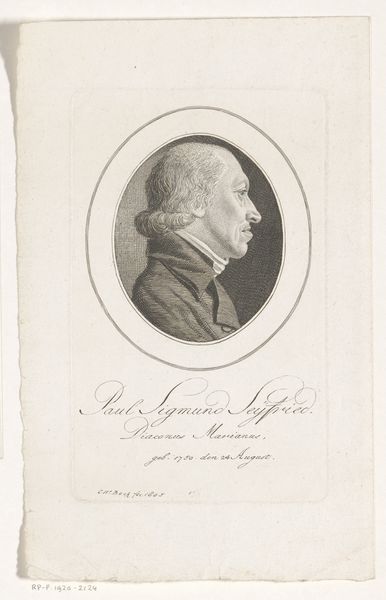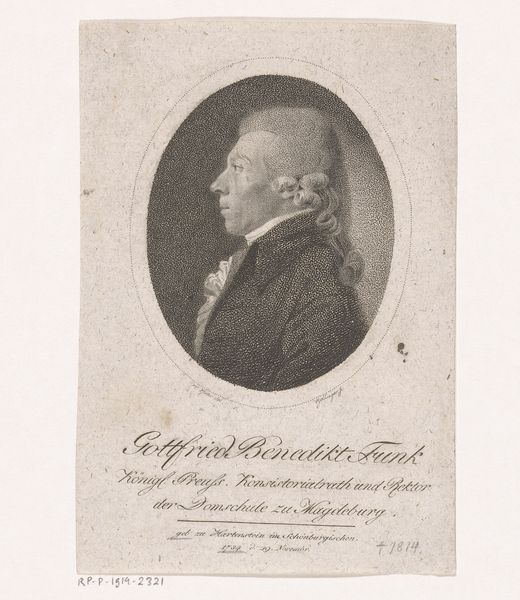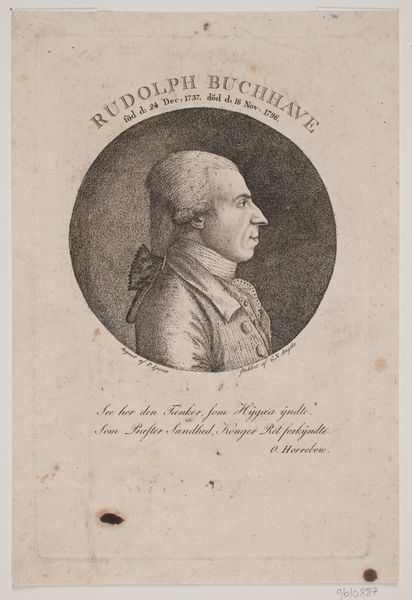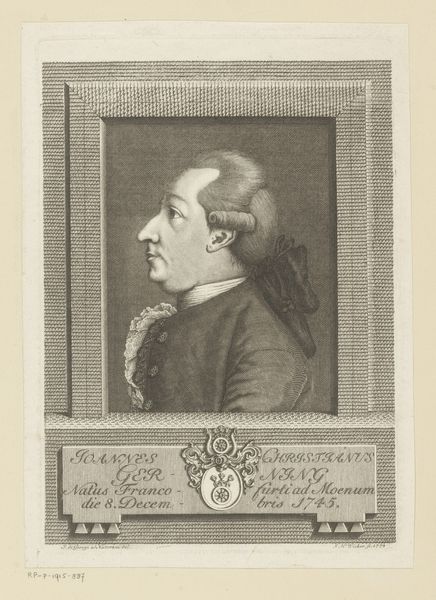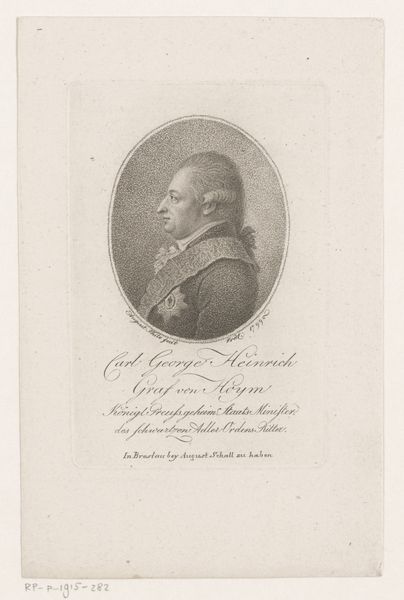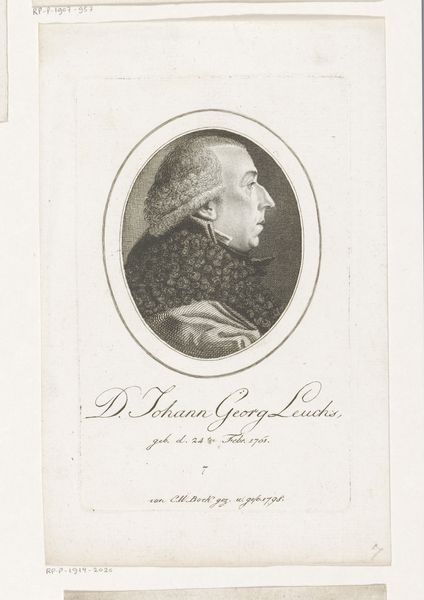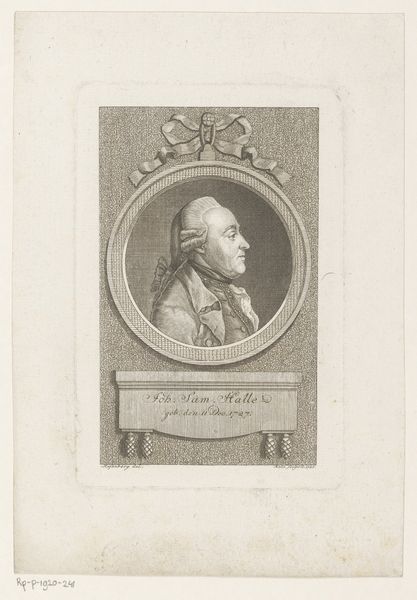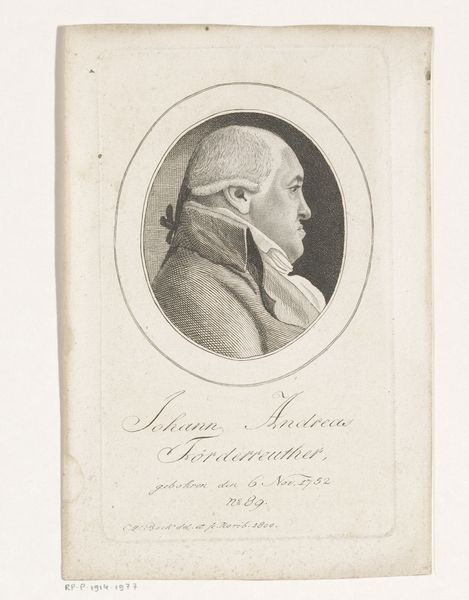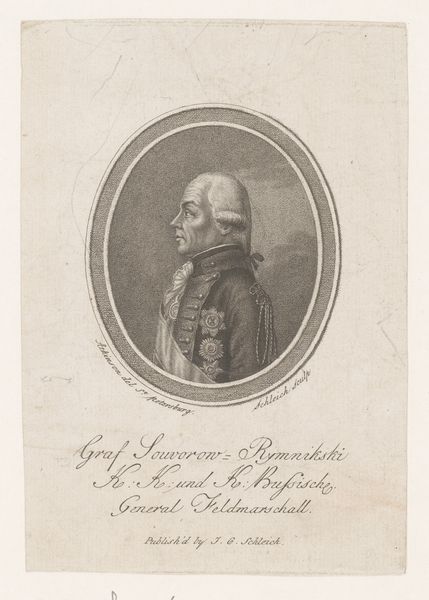
print, engraving
#
portrait
#
neoclacissism
# print
#
history-painting
#
academic-art
#
engraving
Dimensions: height 169 mm, width 102 mm
Copyright: Rijks Museum: Open Domain
Curator: Ah, the precision! The austerity! Looking at this print, made around 1797, I get a distinct whiff of revolution brewing just beneath the surface. Editor: It’s interesting, isn’t it? Before even knowing the who or why, I’m struck by the coolness of it, a kind of…intellectual chill. The guy's got a no-nonsense profile, enclosed in that perfect oval like he’s a specimen pinned for study. Curator: He kind of was, in a way! This is "Portret van Kurt Sprengel," made by Friedrich Wilhelm Bollinger. Sprengel was a rather important botanist, professor of medicine at Halle University. Editor: So, that steely gaze…that’s scientific focus? I can almost feel him dissecting a daisy. Curator: Perhaps! Or more likely, he is thinking about how to classify it. This portrait speaks of the Neoclassical embrace of reason and order. Bollinger’s use of engraving really heightens the starkness, which suits the subject, don't you think? Editor: Definitely. Engraving mimics that clinical, detached quality perfectly. I mean, there's almost a feeling of…containment, of an objective observation removed from passion. He becomes almost an archetype of Enlightenment thought. The stark lines emphasize that. What about its function, I wonder? Did students buy prints as sort of botanical-groupie paraphernalia? Curator: Maybe! Or perhaps this print, reproduced multiple times, solidified his place within the pantheon of scientific giants, ensuring his ideas outlived him. The clean, reproducible nature of print mirrored the Enlightenment's dedication to widespread knowledge. He looks rather serious, though, doesn’t he? Editor: Well, world-changing botanizing is serious business, isn't it? But I see what you mean. It is a statement of intellectual authority more than personal warmth. So much gets lost when distilling the individual to an image like this. Curator: Still, what better way to enter the halls of fame, right? Editor: Quite so. In any case, this exercise in portraiture encourages me to reflect on who decides how someone is remembered.
Comments
No comments
Be the first to comment and join the conversation on the ultimate creative platform.


